VOICES: THE NEW RICHMOND BUSY BEING BORN BY THAD WILLIAMSON, PH.D.
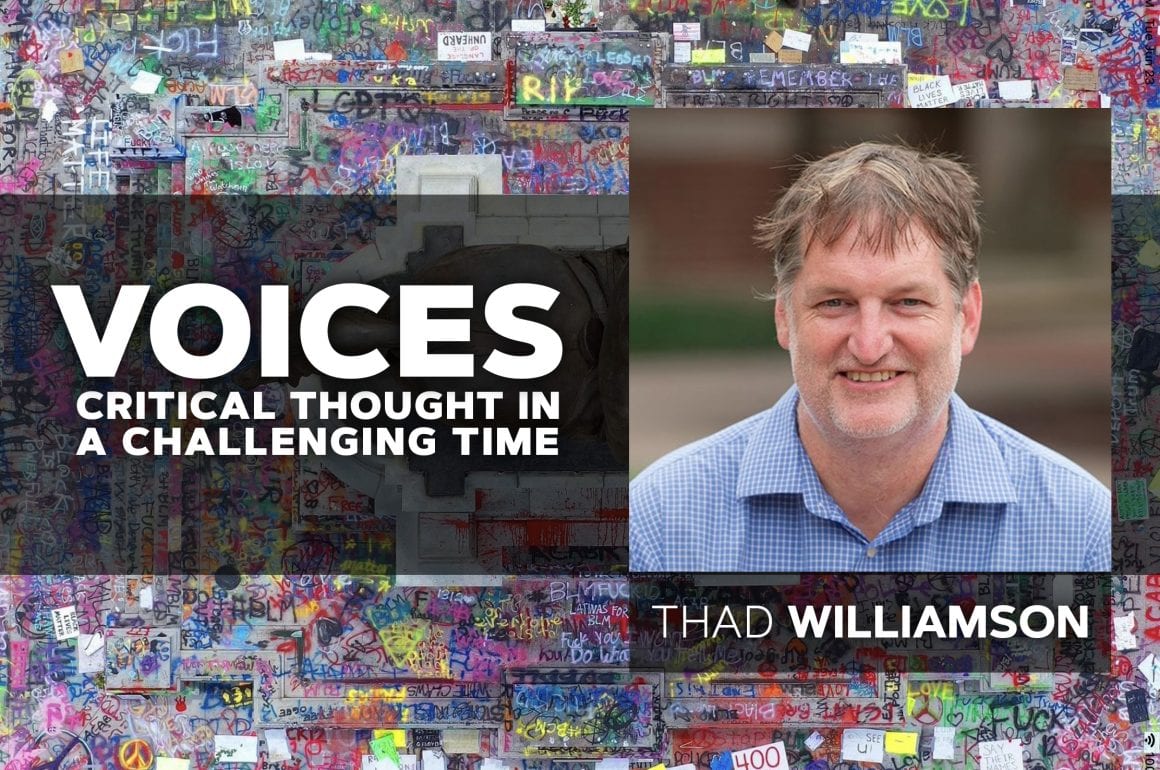
The Emerging New Richmond Politics: Two Observations
The most visible symbols of the Confederacy soon will be gone.
The damage of white supremacy and systemic underinvestment in African-American communities in the City of Richmond all too pervasively remains.
But the dramatic events of June and July 2020 have created an opportunity to turn a new page in Richmond’s history: to take the steps needed to truly transform Richmond from the capital of the Confederacy into a capital of community wealth building, racial equity, and restorative justice.
None of the work needed will be easy, but I believe both the events of this summer and the way they came about could usher in an era of bold change on not just the symbols but the material facts of extreme racial and economic inequality in Richmond.
I came to Richmond in July 2005, shortly after publishing a book on progressive community development strategies and completing a dissertation on how suburban sprawl undermines social and civic equality in the U.S. As a newcomer, it was hard not to think of Richmond as a caricature of everything I had been critiquing in my scholarly work. That August, the Richmond Times-Dispatch published a series of articles on Richmond’s power brokers, a group dominated by white businessmen; then-new Mayor L. Douglas Wilder was presented as the counterweight to the white power structure. Style Weekly’s annual “Power List” painted a similar picture.
In 2008, I wrote a critique of power in Richmond for the “Power List” issue making two key points: First, the “powerful” in Richmond had been demonstrably ineffective in actually tackling the city’s most urgent and obvious problems (education, poverty, racial inequality); second, that Richmond sorely lacked cross-cutting, cross-racial grassroots organizations to help drive change and hold elected leadership accountable. My colleague Amy Howard and I reprised that motif in a follow-up 2011 article, and in a third piece published just over a year ago political scientist Ravi K. Perry and I made the same point.
This brings us to the first major observation about what has changed in Richmond. In the last year, we’ve seen significant growth in the impact of grassroots organizations tackling issues of social and racial justice. I don’t always agree with the policy stances or methods of these organizations (and certainly I was not their favorite candidate when I ran in the crowded 5th District Council race last year!) But their impact has been, altogether, salutary. At its best, grassroots Richmond expresses justifiable rage at the status quo and its deep inequities, and has also shown the capacity to go deep on particular issues like police accountability to put forward actionable reform proposals.
Most importantly, the grassroots groups offer a needed counterweight, long previously missing, to the corporate bias of Richmond politics. It will be interesting (and quite important) to see how these organizations evolve and whether additional new organizations join the space.
Here’s the second major observation: the seeming radicalization of our local politics is absolutely linked to national polarization and the destructive presidency of Donald J. Trump. In 2016, in thinking about the local elections like many others I believed or even assumed we would be living in an Obama-Hillary world: that we would have a moderate-to-progressive Democrat in the White House who would be, in relative terms, a friend to places like Richmond.
In such a world, adept lobbying from the local level up the layers of the political structure plausibly could yield significant new resources as well as policy improvements benefitting Richmond and similar cities.
Instead, we now have a president who has all but declared open war on African-Americans in our nation’s cities, as well as people anywhere that dare to challenge the status quo; and who has undermined democratic institutions, at every possible turn. Further, not only did the federal government mishandle the COVID-19 threat early on with deadly consequences, the president has modeled blatantly irresponsible behavior and an utter lack of compassion for the pandemic’s victims. Trump in effect moved on from even pretending to care once his daily TV briefings started backfiring and once it became clear that people of color in blue states were the most heavily hit demographic.
Our nation was already on edge, or over it, before the video of Ahmaud Arbery’s murder came to light and before the murder of George Floyd. The response, as authentic and powerful as it has been unpredictable, has been nothing less than a massive social movement, the most sustained period of nationwide protest in over half a century, and a quite dramatic consciousness change among many Americans right now, including many white people.
Already here in Richmond that movement has driven past the finish line long-overdue proposals like monument removal and a civilian review board for the police; proposals that the city was and has been ready for but needed a firm push from the public to become policy. (Every candidate in that 5th District City Council race last year endorsed both of those items, and my Council representative Stephanie Lynch has been outspoken on both issues in recent weeks.)
But the protests are deeper than those specific policy steps. They are protests against structural racism itself, they are existential affirmations of the worth of Black lives, and they are the demand of a younger generation to build a better and dramatically different world. They have created a wave of change that anyone in power would be foolish (and wrong) to resist.
Instead, the goal should and must be to translate this energy and this wave into truly transformational policymaking. In some cases, this can build on commitments and initial steps already taken, and in other cases, it will need more wholesale changes. Transformational policy-making involves three prongs: bold programmatic initiatives aimed at the structural roots of racial and economic inequality; the necessary shift of resources to fund those initiatives; and a democratic culture of accountability to make sure sustained impact is achieved.
Without successfully tackling and taking seriously each part of that threefold challenge, we won’t capitalize on the promise of this historic moment.
The Context That Was: Richmond 2005-2020
It’s important, however, to take some time to reflect on the Richmond that was (and in large measure still is). The specific arrangements that define our local civic life reflect both generations of racism and specific institutional structures, some of quite recent origin.
The short, essential history of postwar Richmond involves the simultaneous empowerment of African-American political actors within the boundaries of the City, at the same time that the majority of population and economic growth was taking place in the majority-white counties.
From its peak of nearly 250,000, the city population began a three-decade decline in 1970—the year of the Chesterfield annexation and the year court-ordered busing began in Richmond Public Schools. Judge Robert Merhige, who ordered the busing scheme, subsequently ordered the merger of Chesterfield, Henrico, and Richmond schools—a merger that would have completely altered the last half-century of metropolitan development in our region. Instead, the order was reversed on appeal, a reversal upheld on a split vote by the Supreme Court.
Consequently for decades, resourced middle-class families in this region have been offered a choice between having better-performing schools, generally better public services, less crime and poverty and a substantially lower tax rate by living in the counties rather than the City of Richmond—for only the price of a daily, expressway-facilitated commute into the city. (Over time this became less necessary too as more jobs shifted to the suburbs.)
So as people left Richmond by the thousands between 1970 and 2005, the city tax base shrank, poverty was concentrated in the city, and school performance struggled. The counties offered limited subsidized housing and refused to expand public transportation, and the state refused to intervene to promote regional solutions. Indeed, the state barred Richmond from any further annexation. At the same time, the Reagan presidency began cutting back federal aid to cities.
The major tool the majority-Black City Council identified in the 1970s and 1980s to promote a measure of racial and economic justice—robust affirmative action in public contracting—was struck down by the Supreme Court. In the 1990s the city’s homicide rate spiked (reaching 160 in 1994), as poverty continued to rise and conditions in poor neighborhoods continued to deteriorate.
These developments, to be clear, reflected metropolitan political and institutional arrangements which left the City of Richmond and its leaders in a nearly impossible position. The city was given the region’s toughest problems, the fewest resources, then held in contempt (often, racist contempt) for not being able to magically solve those problems.
Still, many hoped that Richmond might do better by adjusting its form of government, and in 2003 voters approved Richmond’s current, unique structure of government: A directly elected mayor who appoints and fires a chief administrative officer (who in turn has direct control over city agencies); a City Council with the power of the purse; and an elected School Board with no taxing authority.
The idea of a directly elected mayor (which took effect in 2004 with the election of Doug Wilder) had wide, cross-cutting support, and understandably so. In a city with such severe problems and a fragmented political structure, the idea of having one elected official accountable on a citywide basis, and empowered to put forth a compelling vision for the city as a whole, is appealing. Much of the public service I have personally invested in the city has been part of an effort to make the idea work.
Yet consider, for a minute, the challenges. The Mayor under the current charter has two primary powers: to appoint the CAO and introduce the budget. The formal administrative powers—signing contracts and the like—belong under the umbrella of the CAO; the mayor’s formal power is simply the ability to appoint and dismiss a CAO. So the first challenge any mayor in this system will have is how to get a highly competent CAO with a vision aligned with the mayor’s goals, with strong administrative and leadership ability, with strong problem-solving ability, who will also defer to the mayor’s wishes (at least on major items) and avoid public conflict.
But that’s only the first challenge. Then there is the fact that the largest public agency, the schools, report to an elected board, and that that board has every incentive (if not obligation) to ask for as much money as possible from the City every year, yet has no formal reporting requirement on outcomes to its largest funder (City Council).
Arguably the next most important public agency, after the schools and the police, the local housing authority, is funded primarily by the federal government and subject to its rules and regulations. Its board is selected by City Council. Another crucial agency, the transit authority, is controlled in part by suburban officials, with local board representatives selected by City Council.
Three of the most important institutional players who would be crucial parts of any mayor’s serious efforts to drive progressive change—the schools, low-income housing, and transit—are not within the mayor’s purview. Indeed, each historically are pretty assertive about their own institutional independence.
Of course, it is also not easy for a mayor to directly re-shape the agencies within his or her formal control. The police department, public works, social services, and so on down the line….all have strong and distinct internal cultures, ways of doing things, formal and informal norms. The one thing they all have in common is they all believe they have too large a job and too few resources to do it with (and most of the time, they are right in this assessment).
A mayor can and should re-prioritize resource allocation over time through the budget process, and can and should initiate organizational-wide improvements.
But the reality is no mayor can afford to alienate his or her departmental leaders or rank-and-file employees for any substantial period, in the name of policy change, organizational improvement, or some other goal, because it’s those same departmental leaders and employees who produce the services on which city residents rely and on which mayors are ultimately judged.
And, yes, there’s more: the City Attorney’s office, the most important agency in facilitating action, legislation, and policy change, does not report to the mayor either. It represents both the mayor and City Council as “constituents” but regards the (fictive) “City” as a whole as its true client. This is problematic for several reasons, but here’s the most significant practical consequence of this arrangement: time and again projects driven by the city agencies are held up by the timetable of the City Attorney’s office, whose staff (probably too few) report to the City Attorney—not the mayor. This, plus the fact that the City Attorney regularly adjudges conflict between the mayor and Council, makes the (unelected) City Attorney in many instances literally the most powerful figure in City Hall.
This organizational fragmentation and dysfunction would matter less if the City of Richmond were a prosperous, affluent community with relatively few serious problems and resources (public and private) to spare. The opposite is the case. We have serious, urgent problems and what city government does or does not do can profoundly influence the lives of thousands of people, especially children and people in need.
In 2011, Mayor Dwight C. Jones formed the Mayor’s Anti-Poverty Commission, picking up an idea previously championed by Councilwoman Ellen Robertson, to look at the root causes and identify policy solutions to the problem of entrenched poverty. (For most of the last decade, Richmond has had an overall poverty rate of about 25%, a child poverty rate of about 40%, and has been ranked in the bottom 2% of localities nationally in promoting upward mobility for low-income kids.)
I participated because I care deeply about the issue and because I saw it as the most promising avenue for driving a measure of community change, given a) the internal fragmentation just described b) a moderate-to-conservative regional and statewide political climate and c) the weakness of civic organizations (as well as “elite” leadership) measured by the capacity to drive proactive change. The fact that a mayor wanted to tackle poverty wasn’t all that was required to bring about any measure of change, but it was something.
I devoted a lot of time to the Commission and ended up being tapped to write the final report; then worked with Councilwoman Robertson for a further year as a volunteer to translate the report’s broad findings into specific, actionable steps that city government could actually do, over the course of 2013. Importantly, we convened a citizens advisory board including community leaders like Lillie A. Estes and others to provide a reality check on all proposals and make sure they were in sync with the needs of the community, as best as we could.
It was a bit messy, as democracy even at its best always is. But we worked hard and held dozens of meetings with seven distinct working groups as well as the citizen advisory board, reviewing in detail the policy proposals, asking detailed questions, documenting the basis for the proposals. We also leveraged the media as much as we could through op-eds and cooperation with journalists (local and national) to generate community buy-in and also (implicitly) put pressure on the mayor to follow through.
Finally, a comprehensive set of budget proposals that were sent to Mayor Jones in January 2014. In March 2014, he announced a budget proposal that included about 90% of what we asked for, including funds to launch a new coordinating entity to be known as the Office of Community Wealth Building. About a month later, he announced me as the first director of the effort, and in June of that year, I entered City Hall for the first time as an employee.
This entire process involved activists, including some prominent ones. But what actually happened, for better or worse, was not driven by grassroots activist organizations. They were driven by the mayor, a Council member, and some deeply driven community members.
The process whereby an elected mayor in effect took the advice of experts and community members outside of his formal administration in shaping a sweeping city initiative was more mundane than sensational. And yet it was the community participation element of the initiative, fragile at times, which gave the initiative its heartbeat, its credibility, and a sense of authentic accountability.
The very first phone call I got on the morning the Office of Community Wealth Building opened for business (June 2, 2014) came from Lillie A. Estes, who told me she believed in me and to “keep your integrity, and you will do okay.” She knew better than I that the real work had only just begun.
A City Hall Story
This was the political climate in Richmond when I took leave from the University of Richmond to lead the establishment of the Office of Community Wealth Building, the fruit of the Mayor’s Anti-Poverty Commission, and the subsequent Maggie L. Walker Initiative for Expanding Opportunity and Fighting Poverty.
Working directly with Mayor Dwight C. Jones and a cast of (literally) hundreds, in less than two years we built and staffed a new agency intended to lead an integrated approach to fighting poverty and building wealth, while also establishing several new programs that had emerged as priorities from the Maggie L. Walker Initiative. We secured both City and external funding for OCWB, and began legwork for a statewide community wealth building initiative which came to fruition in 2017, allowing Richmond OCWB to double its size over the past three years using state dollars.
Importantly (and not recognized enough), Mayor Jones and OCWB set a public goal of working to cut poverty in Richmond 40% by 2030, and childhood poverty by 50%, relative to 2015 levels.
That’s the top-level summary. Here I want to provide just one snapshot of what it took to get one important part of that work done. Citizens and aspiring leaders need to understand how hard it is to get things done in City Hall, and also not kid themselves that it will get dramatically easier in the near-term future.
Improving education was one of the five key pillars of the Mayor’s Anti-Poverty Commission Report. This meant, obviously, engaging with Richmond Public Schools. We focused attention on three specific areas of need clearly relevant to RPS yet not under the formal authority of the School Board: early childhood education, after-school programming for adolescents, and supporting graduating students in entering college or an employment track.
Yet by summer 2014, the relationship between the 2nd Floor and 17th Floor of City Hall was frosty due to yet another very public battle over the school’s budget that spring. I was told that I needed to get permission to collaborate with RPS.
I asked for and got permission from Mayor Jones, who invited the School Board and Superintendent in for a meeting in July 2014 so I could present the City’s poverty-fighting plan and formally request RPS’s participation and support. As a result of that meeting, two new task forces were formed with School Board and RPS staff representation as well as City staff and community members: one focused on early childhood education, the other on developing a Promise Scholarship program to support postsecondary education for all RPS graduates.
Here I’m only going to focus on the work of the Promise Scholarship group. Promise Scholarship programs nationwide offer all high school students in a community tuition support to attend college; they exist in several dozen cities nationally. We were interested in doing this here in Richmond as a way to fundamentally alter both the actual opportunities for RPS graduates and help inspire increased achievement within RPS itself.
To start a Promise Scholarship program requires millions of dollars in financial commitment. And as our Task Force learned from other cities nationally, we heard that even when scholarship money was available, there was often a need for much more counseling support for students in low-wealth neighborhoods, to help build a college-going culture within high schools and provide practical assistance with the complex application and financial aid process.
Our committee traveled to Lynchburg, Virginia, twice, to visit first hand with the community leaders there who had established “Future Centers” in that city’s two high schools, with impressive success. We did not think we could get millions of new dollars in the city budget anytime soon to fund a full-blown scholarship program, but perhaps could get support for starting Future Centers within each RPS high school for a fraction of that cost.
So our committee, including our RPS representatives and the RPS Education Foundation, developed a formal proposal to launch the RVA Future Centers as a city-funded program based at the Foundation. We had about a dozen meetings as a working group, visited a national conference, hosted a national expert, and commissioned a feasibility study on how a scholarship program could be developed in Richmond. We met with RPS counseling staff to get their feedback and be sure the program would complement rather than duplicate existing efforts.
I worked closely with the superintendent and his chief of staff to make sure they were informed and on board with the initiative. I kept Mayor Jones regularly updated on the committee’s work, and he expressed verbal encouragement and support. In short, we did everything we could as a group to build consensus support for a plan focused on launching a Future Center initiative, and submitted a documented, written proposal requesting $800,000 in City funding beginning in FY 2016.
All that work was only prologue to the budget battle that lay ahead. To find significant city money for a school-based program at that particular time required continuous internal lobbying as well as collaboration with the partners at the table during the early months of 2015.
It wasn’t enough to simply have the mayor’s verbal support for the program; other folks also had the mayor’s ear, and some were skeptical of the initiative. I had to make the case again and again, through written and verbal communication, formal presentations, and frankly personal pleas. To be honest, I drew upon all the (multi-layered) privilege invested in me at that moment to try to get the job done.
My goal (and responsibility in that moment) was to make sure the dollars actually got put in the proposed budget, or else the effort would have been for naught. Finally, after several iterations, the budget office was given a direct order from the top to put the program in, just days before the budget proposal was released. The end result of constant shuttling and bargaining between the 2nd Floor and the budget office was a commitment of $425,000 to the program—less than what we wanted but enough to get things started.
The budget then was sent to City Council for amendment and approval—always a fraught process. It became important to be sure RPS administrators would vocally support the program and let Council know they wanted to see the Future Centers happen (even in a year their own funding request would not be fully met). They did, which was critically important. Our team also cooperated with a Style Weekly cover story on the proposal, made a presentation on the School Board, and responded to questions about the program that came in from Council and the general public.
The dollars were finally approved by City Council, we worked very hard (OCWB, RPS, and the Foundation) together to hire staff and launch the program in all five comprehensive high schools in September 2015, and in December 2015 we had a formal launch at Armstrong High School with Secretary of Education Anne Holton, who remarked “this is what collaboration looks like.”
Over the past five years the program has helped thousands of RPS students apply for college and get scholarships, and has become an established part of each high school. Starting in 2020-21, the program and staffing is shifting from the Foundation to Richmond Public Schools proper.
This is a programmatic and policy success, but it took enormous effort to pull off. And it required painful compromise. To get the Future Centers in the budget, I in effect withdrew an equally ambitious funding request for initiatives in the early childhood space after it was made clear there was no way both requests could be met. (Fortunately, an external grant in May 2015 from the W.K. Kellogg Foundation allowed the early childhood work to continue.)
I bring forward this story for two reasons. First, the substance of progressive policy work in the decade ahead in City Hall is inevitably going to have some similarities to what I just described: organizational complexity, multiple political and organizational imperatives, perpetual conflict over scarce resources, the challenge of getting people from different spaces on the same page, the imperative of good communication and closing all loops, and the willingness to stick your neck out to make something happen. It also involves, inevitably, negotiation and compromise. All of this becomes just a little bit easier with experience, but it’s never easy and not likely to become much easier anytime soon
Second, while I’m proud of what the RVA Future Centers have done over the past five years, I’m all too aware of what has not yet been established: a universal scholarship program that could in good faith guarantee all graduating RPS students have financial support to continue their education, whether in college or a vocational program. This is possible if we as a community are willing to put several million dollars a year on the table. It could change the sense of possibility in thousands of students’ lives.
Other communities have done it. We still have not. And so there is plenty of space and need, in this space and several others, to build on pre-existing work and take the bigger, more dramatic, and yes more expensive steps that this historical moment requires.
Inside-City Hall politicking can get some things done, and there will always be a place and need for it. But it will take larger movements and external pressure to truly move resources in new directions, at a significant scale.
Putting it All Together: Policy, governance and accountability for the reborn Richmond
My hope for the current moment is that we, as a community, might finally take the bold steps need to bring about structural change.
We need a community-driven plan for the City’s next ten years, to address the structural roots of racial inequity and build community wealth. That plan, inevitably, will cover policy areas like education, housing, workforce development, social enterprise development, transportation, policing and public safety, public health, infrastructure, and more.
Inevitably that plan will overlap with and hopefully build upon the work of the Mayor’s Anti-Poverty Commission and the current, thriving Office of Community Wealth Building (which has itself grown in impact each of the last several years).
But it also will need to take things to a different scale, in terms of both resources and public buy-in. I will close with two hopeful observations and one cautionary one.
The first hopeful observation is this: a strong community plan must truly come from the community. It must be grassroots-driven, yet also connected to existing public entities and related non-profits.
In a forthcoming book with Melody C. Barnes and Corey D. B. Walker, we use the term “community wealth building” not to describe specific initiatives but as a comprehensive policy paradigm to achieve racial and economic justice involving:
- Strong citizen participation on the front end.
- Establishing bold equity goals rooted in commitments to justice, as well as accountability measures.
- Holistic use of various forms of wealth (physical and financial, public and private, actual and potential) to address our most serious community needs.
- Inclusive and innovative economic development strategies that deliberately grow and re-shape the flow of resources and opportunities within the community.
Those four building blocks are still sound advice for Richmond and for any community. Hardest to organize is authentic front-end participation, but without it, success is impossible. To put a fine point on it, the presence of front-end participation was critical to the relatively successful launches of the Office of Community Wealth Building, the Richmond 300 Master Plan, and the current Richmond Public Schools strategic plan. The absence of such participation sank the Navy Hill project (like the Shockoe Stadium proposal before it).
To move this community in sustainable ways, we have to recognize that activism and protest is not the same as governance and policy, but we have to make governance and policy grow as best we can from the bottom-up, with policymakers and “experts” primarily in listening and information-providing roles. This means centering the voices of residents, especially those who are often not heard. This is hard, but it can be done. It has to be done.
The second hopeful observation is that even as the Trump presidency has set the context for the recent protest, the gradual transformation of Virginia into a blue state has opened up policy possibilities at the state level that have not been available for decades, if ever. In 2017 I was overjoyed when the state budget began including $7.5 million annually for a new matching program to allow localities to expand community wealth building-type efforts. Richmond obtained grant support of nearly $2 million annually to double the Office of Community Wealth Building, such that in 2018-19 the agency helped 600 people obtain jobs compared to 228 in 2016-17.
That’s great, but we must aim higher. The City of Richmond, as part of a process of addressing problems on the scale they exist, should not be shy about asking for better policy from the state at various levels—both the obvious ones like dramatically more school and transit funding, but also regional initiatives involving the counties. Will Henrico and Chesterfield of their own accord develop inclusive housing policies and expand public transit? Maybe, but it would happen faster if the state gave them a strong nudge.
Maybe we can even revisit Judge Merhige’s decision from the 1970s on metropolitan integration of schools. Maybe we can talk seriously about regional revenue sharing.
It’s past time to start asking those questions. We don’t need just a few programs to tackle inequities, we need to re-shape the systems which are generating those inequities in the first place. In this work, the city, finally, can at least for the moment look with hope to the state as a needed partner.
Frankly, that thought has me excited. I think we all should be excited about Richmond’s future.
But let me end on a cautionary note: the organizational challenges, the bureaucratic complexities, the flaws in the charter—in a word, the tough stuff of governance—are stubbornly persistent to political winds. Political winds can make policy announcements possible but actually delivering change through our existing institutions is and will remain difficult. And while some of the organizational flaws might be corrected or amended, we can’t wait for all that to happen before taking up the real work.
Anyone who wants to be an elected official in Richmond, now or in the near future, should thus stand warned: It will require the determination of David against Goliath and the patience of Job amid a thousand frustrations to drive present hopeful aspirations into lasting, meaningful change that actually improves the conditions of life for those too long left out in Richmond.
And yet, it can be done, though it will always be messy and imperfect. I’m hopeful that the strengthened climate of social activism in Richmond can lessen some of the obstacles by lighting a fire under elected officials and creating an appropriate sense of urgency. If those officials are committed and effective, they in can turn can figure out a way to convey that sense of urgency to everyone at every layer of city government, as well as its partners.
This is hard, and it will take much more than having the “right” policies to get it done. But it can be done.
I’m more hopeful about this city’s future than I was two months ago. I imagine a year from now a city that has been reinvigorated by this period of protest, a city that has developed in community-driven fashion the basis of a comprehensive plan for the next decade to attack racial and economic inequities at their root, and a city that has begun implementing parts of that plan.
That future is possible, and all of us have a role to play in making it happen. As Bob Dylan sang over half a century ago, “please get out of the new [road] if you can’t lend your hand, for the times, they are a-changin’.”


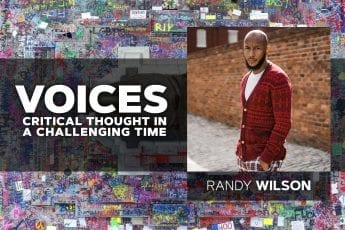
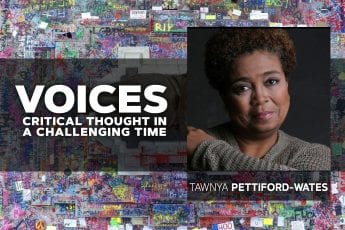
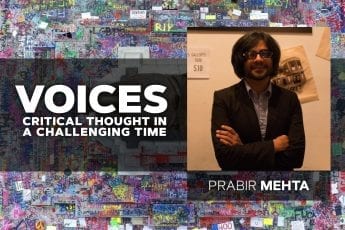


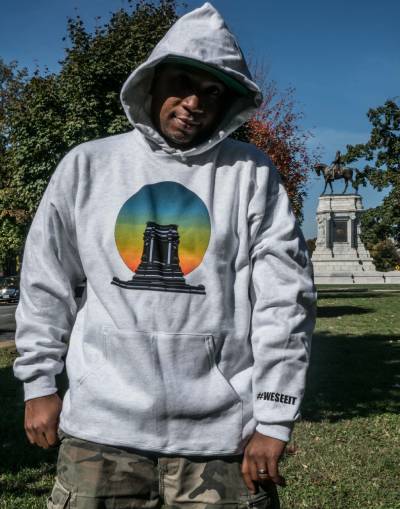 The Cheats Movement is dedicated to hip-hop culture, politics, and community activity. We see our community different than most, therefore, #WESEEIT
The Cheats Movement is dedicated to hip-hop culture, politics, and community activity. We see our community different than most, therefore, #WESEEIT
Thad, thank you! This is a tremendous piece. Required reading for all Richmonders who aren’t already in local government.